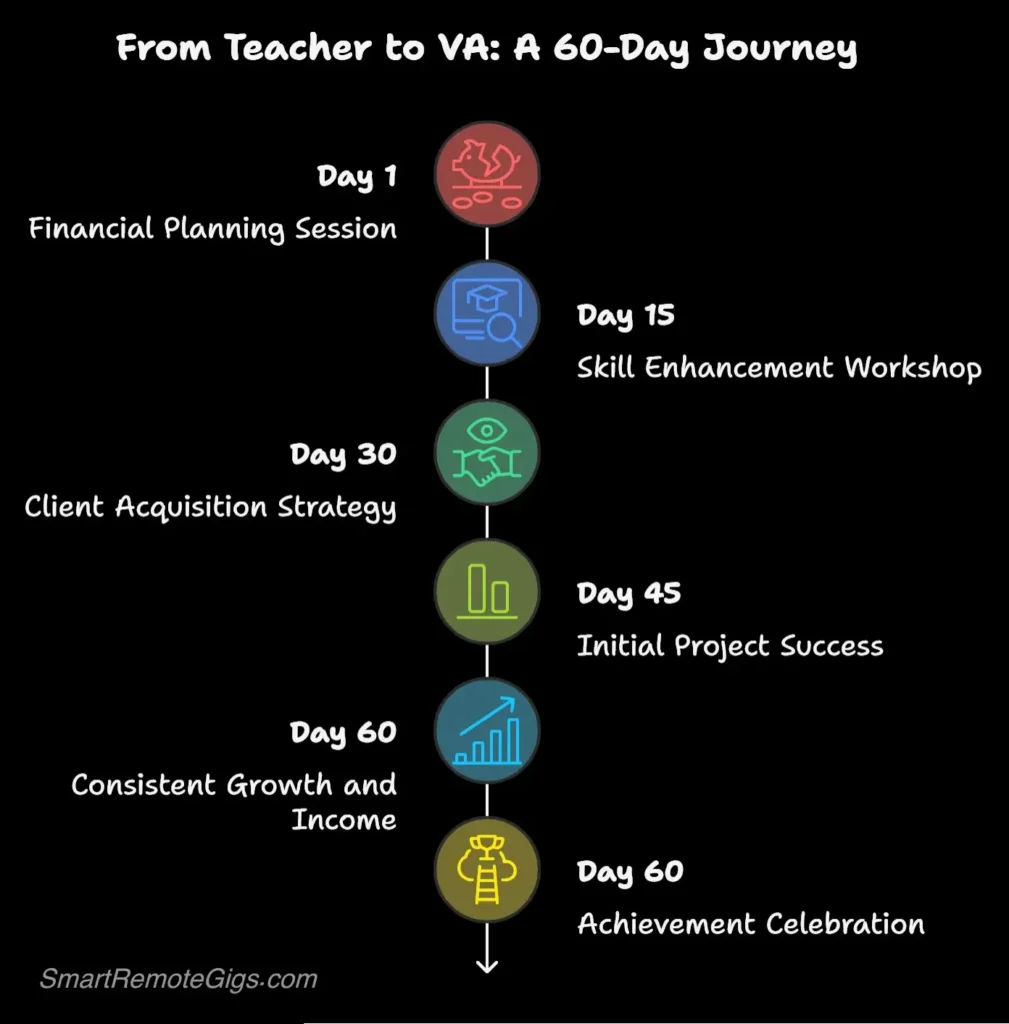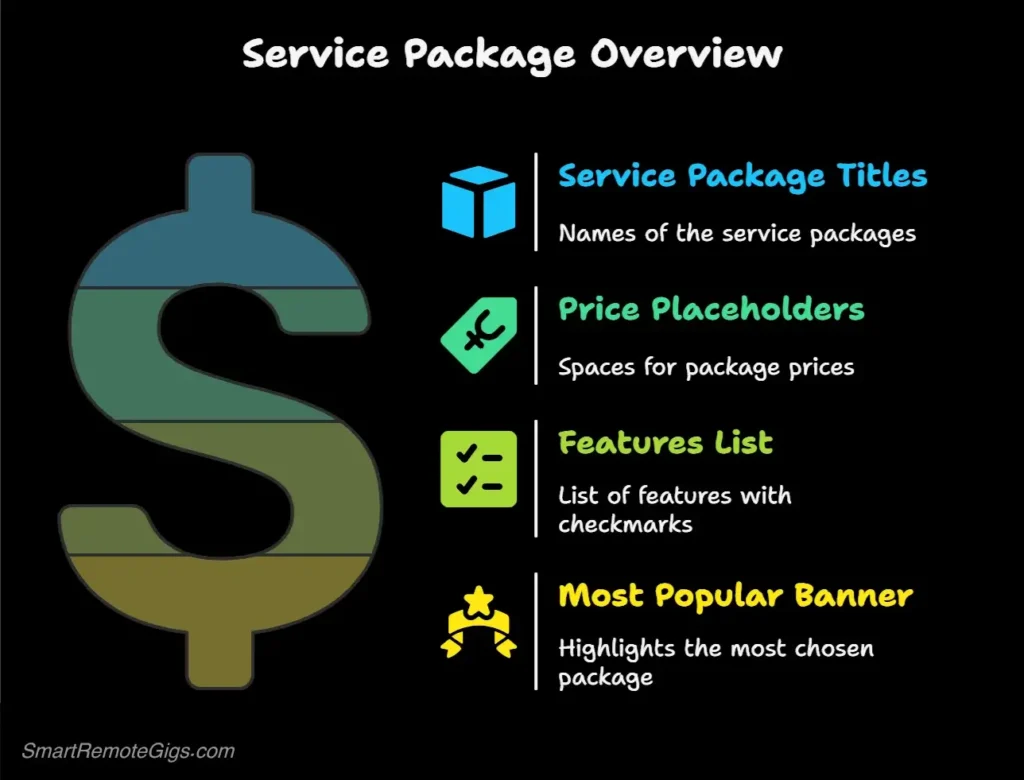Sarah Chen never thought she’d become an entrepreneur. After eight years teaching elementary school in Phoenix, Arizona, she was passionate about education but frustrated with her financial reality. Despite her master’s degree and years of experience, her annual salary of $42,000 barely covered her student loans, rent, and basic living expenses.
“I loved my students, but I was tired of choosing between buying groceries and putting gas in my car,” Sarah recalls. “I knew I needed something to supplement my income, but I had no idea where to start.”
That changed in March 2024 when she discovered the world of virtual assistant hustle—a side business that fit perfectly around her teaching schedule. Within 60 days, she had built a client base that generated over $1,000 in additional monthly income—all while maintaining her full-time teaching position.
Here’s exactly how she did it, the mistakes she made along the way, and the three pieces of advice she wishes she’d known from the beginning.
The “Why”: From Classroom Burnout to Financial Freedom

Sarah’s motivation wasn’t just about money—it was about control. Like many teachers, she felt trapped by a system that undervalued her skills and offered limited opportunities for financial growth.
“I was working 50-hour weeks, spending my own money on classroom supplies, and still living paycheck to paycheck,” she explains. “I realized that if I wanted financial stability, I couldn’t rely solely on my teaching salary.”
The final straw came when her car needed a $1,200 repair. “I had to choose between fixing my car and paying my rent on time. That’s when I knew something had to change.”
Sarah set a specific goal: earn an additional $1,000 per month within 90 days, working no more than 10 hours per week outside of her teaching responsibilities. She wanted something that would complement her teaching schedule, not compete with it.
Identifying Transferable Skills: Why Virtual Assistance?
Initially, Sarah considered tutoring—the obvious choice for a teacher looking to earn extra income. But after researching the local market, she discovered that most tutoring positions paid only $15-20 per hour and required evening or weekend commitments when she needed time to decompress.
That’s when she discovered virtual assistance and realized her teaching background had given her exactly the skills businesses needed:

“I realized I was already doing virtual assistant work—I was just doing it for free for my school district,” Sarah laughs.
The Action Plan: Her Step-by-Step Launch Process
Step 1: Defining Her Services (Social Media & Admin Tasks)
Rather than offering generic “virtual assistant services,” Sarah focused on two specific areas where she felt confident:
Social Media Management:
- Creating and scheduling social media posts
- Responding to comments and messages
- Basic graphic design using Canva
- Social media strategy and planning
Administrative Support:
- Email management and organization
- Calendar scheduling and appointment setting
- Data entry and document formatting
- Customer service chat support
“I chose these because they felt natural to me,” Sarah explains. “I was already managing my school’s Instagram account and helping other teachers with their Google Workspace calendars.”
Step 2: Finding Her First Client (Using a Niche Facebook Group)
Instead of diving into competitive platforms like Upwork or Fiverr, Sarah took a different approach. She joined Facebook groups specifically for small business owners in her local area and related niches.
Her breakthrough came in a Facebook group called “Phoenix Small Business Network”—a community of 3,200 local entrepreneurs and business owners.
“I spent two weeks just watching and learning,” Sarah remembers. “I noticed that business owners were constantly asking for help with social media and admin tasks, but they couldn’t afford full-time employees.”
Sarah identified her ideal client profile: small business owners (consultants, coaches, service providers) who were too busy to manage their social media and administrative tasks but couldn’t justify hiring a full-time assistant.
Step 3: The Simple Pitch That Landed the Job

After observing the group for two weeks, Sarah saw a post from Jennifer, a local life coach who was struggling to maintain her social media presence while growing her practice.
Instead of a generic response, Sarah crafted a personalized message:
Hi Jennifer! I saw your post about needing help with social media. As a teacher, I understand how challenging it is to balance client work with marketing tasks. I actually help small business owners like you maintain consistent social media presence while you focus on what you do best.
I’d love to help you create a month’s worth of Instagram posts and manage your daily engagement. Would you be interested in a brief conversation about how I might support your social media goals?
I’m offering my first few clients a special rate while I build my portfolio. Happy to share some samples of my work if you’re interested.
Best regards,
Sarah
“What I learned later was that my message worked because it was personal and specific,” Sarah reflects. “I didn’t just offer services—I showed I understood her specific problem and offered a concrete solution.”
Jennifer responded within hours, and after a 30-minute phone call, Sarah landed her first client at $25 per hour for 8 hours per week.
The Numbers: A Transparent Look at Pricing and Hours
Sarah’s path to $1,000 wasn’t linear, but her progression shows how virtual assistant income can scale quickly with the right approach:
Month 1 Earnings: $347
- Client 1 (Jennifer): $200 (8 hours/week at $25/hour)
- Client 2 (Local dentist): $147 (7 hours at $21/hour for social media setup)
Month 2 Earnings: $1,200
- Client 1 (Jennifer): $1,000 (increased to 10 hours/week at $25/hour)
- Client 2 (Dentist): $352 (ongoing social media management, 4 hours/week at $22/hour)
- Client 3 (Business consultant): $240 (email management, 3 hours/week at $20/hour)
- One-time projects: $164
Services and Pricing Breakdown:
| Service | Starting Rate | Month 2 Rate | Hours/Week |
|---|---|---|---|
| Social Media Management | $18/hour | $22/hour | 12-15 |
| Email Management | $16/hour | $18/hour | 5-8 |
| Administrative Tasks | $15/hour | $18/hour | 3-5 |
| One-time Project Setup | $20/hour | $25/hour | Variable |
Total Hours: Sarah averaged 18-22 hours per week across all clients, well within her goal of staying under 25 hours weekly.
As her income grew beyond $600 annually, it became crucial for Sarah to understand her tax obligations and business deductions—a topic we cover comprehensively in our Guide to Side Hustle Taxes.
Key Insights from Sarah’s Pricing Strategy:
- Started 15-20% below market rate to build credibility
- Raised rates every 30 days for existing clients
- Charged premium rates for one-time setup projects
- Quoted project rates (not hourly) whenever possible
The Challenges: What Sarah Wishes She’d Known
Sarah’s journey wasn’t without obstacles. Here are the three biggest challenges she faced and how she overcame them:
Challenge 1: Underpricing Her Services
“I started at $15 per hour because I was scared no one would hire me. I quickly realized I was attracting clients who didn’t value quality work.”
Solution: After her first month, Sarah raised all her rates and focused on attracting clients who understood the value of professional support.
Challenge 2: Scope Creep
“My second client kept adding ‘quick tasks’ that turned my 4-hour week into 7 hours without additional pay,” Sarah recalls.
Solution: Sarah created detailed service agreements that clearly outlined what was included and established an additional rate for extra work.
Challenge 3: Time Management
“Balancing teaching and client work was harder than I expected,” Sarah notes. “I was working until midnight some nights.”
Solution: Sarah blocked specific times for VA work (early mornings and weekends) and learned to batch similar tasks together for efficiency.
Sarah’s Top 3 Pieces of Advice for Aspiring VAs
After six months of running her virtual assistant business, Sarah has clear advice for teachers and other professionals considering this path:
1. Start with Your Network, Not Job Boards
“I wasted my first week creating profiles on Upwork and Fiverr. The competition was intense, and I was competing on price with people from countries with much lower costs of living.”
Instead, Sarah recommends:
- Join local Facebook business groups
- Reach out to small business owners in your personal network
- Offer services to colleagues who have side businesses
- Look for opportunities in professional associations you’re already part of
For specific tools to help manage your growing client base, check out our guide to the 10 free tools that can launch your side hustle.
2. Package Your Services, Don’t Sell Hours

“My biggest breakthrough came when I stopped charging hourly and started offering packages,” Sarah explains. “Instead of ‘$20 per hour for social media,’ I offered ‘Complete Social Media Management: $400/month.'”
Her most popular packages:
- Social Media Starter: $300/month (3 posts/week, basic engagement)
- Social Media Pro: $500/month (5 posts/week, engagement, basic analytics)
- Admin Support Package: $250/month (email management, calendar scheduling, 6 hours of general admin)
3. Raise Your Rates Regularly
“I was terrified to raise my rates, but every client said yes when I explained the increased value I was providing,” Sarah notes.
Her rate increase strategy:
- Month 1-2: Build credibility at lower rates
- Month 3: Raise rates by 15-20% for new clients
- Month 4: Raise rates for existing clients with 30-day notice
- Month 6+: Raise rates every 90 days based on skills and results
The Results: More Than Just Money
Six months after starting her virtual assistant business, Sarah has achieved more than her original $1,000 monthly goal. She now earns $1,800-2,200 per month working 20-25 hours per week.
But the financial success is only part of the story.
“The confidence I’ve gained is incredible,” Sarah reflects. “I went from feeling trapped by my teaching salary to realizing I have valuable skills that businesses need. I’m no longer worried about unexpected expenses or living paycheck to paycheck.”
Sarah has also used her VA income to invest in professional development, taking courses in digital marketing and project management that have allowed her to raise her rates and attract higher-quality clients.
Current Status: Sarah continues teaching (she loves her students too much to quit) but now has the financial freedom to make choices rather than settle. She’s considering transitioning to part-time teaching to grow her VA business further.
Your Turn to Write a Success Story
Sarah’s story demonstrates that building a profitable virtual assistant business doesn’t require special skills, massive time commitments, or significant upfront investment. It requires identifying your transferable skills, finding clients who value those skills, and consistently delivering excellent service.
“The hardest part was starting. Once I landed my first client and realized I could actually do this, everything else fell into place. If you’re thinking about starting a VA business, stop researching and start doing. Your first client is out there waiting for exactly what you can offer.”
Sarah’s success started with a plan and the courage to take action. Her systematic approach—from skill identification to client acquisition—proves that the strategies outlined in comprehensive business guides actually work when implemented consistently.
Ready to follow Sarah’s example? Her story is just one of many success cases featured in our complete Side Hustle Guide: From Idea to First $1,000. Inside, you’ll find the exact 7-day launch framework Sarah used, plus 19 other vetted side hustle ideas with realistic timelines and honest earning potential.
Remember: Sarah’s story started with a single message in a Facebook group. Your success story could start today with one small action. What will yours be?
Have questions about starting your own virtual assistant business? Want to share your own success story? Connect with our community of aspiring entrepreneurs who are turning their skills into profitable side hustles.






